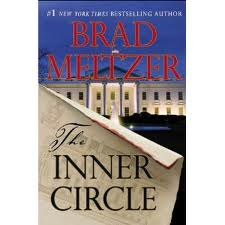 “In Garfield’s experience, education was salvation. It had freed him from grinding poverty. It had shaped his mind, forged paths, created opportunities where once there had been none. Education, he knew, led to progress, and progress was his country’s only hope of escaping its own painful past.”
“In Garfield’s experience, education was salvation. It had freed him from grinding poverty. It had shaped his mind, forged paths, created opportunities where once there had been none. Education, he knew, led to progress, and progress was his country’s only hope of escaping its own painful past.”
― Candice Millard, Destiny of the Republic: A Tale of Madness, Medicine and the Murder of a President
For some readers, nonfiction can be dense, hard to get through, and a way to guarantee a nap. For others, they devour every piece of nonfiction they can get their hands on. They find it riveting, engaging, and can’t wait to share little tidbits they learn with others. I find myself in the middle of those two camps, forever searching for narrative nonfiction, nonfiction that reads like fiction and pulls you into the story from the start. Author Candice Millard writes narrative nonfiction, as evidenced in her 2011 book, Destiny of the Republic: A Tale of Madness, Medicine and the Murder of a President.
James Abram Garfield’s rise to the presidency was extraordinary. He was born into abject poverty, becoming a scholar, Civil War hero, and then eventually a reformist congressman. Garfield was actually nominated for president against his wishes and eventually became president. The story of James Abram Garfield’s presidency is short. Four months after his inauguration, he was shot in the back at a train station by a deranged man named Charles Guiteau. Garfield survived the gunshots, but died two months later.
After Garfield was shot, the nation was destroyed. Battles were happening throughout the country and in the government. His opponents in government were fighting for control of the presidency and the future of the nation. Medical professionals were fighting over the president’s medical care. In the medical world, strides were being made in antiseptic care. This was highly controversial and sadly Garfield’s medical team weren’t believers in antiseptic care. In addition to fighting over who was in charge of his care, his team provided archaic and outdated treatments.
Alexander Graham Bell, the inventor of the telephone, was desperate to help the president, as he was working on a new device that he believed would have the capability to find the bullet still lodged within Garfield’s body. However Garfield’s doctor did not trust Bell enough to examine Garfield on his own, instead saying Bell could only examine a certain part of Garfield where the team believed the bullet to be lodged. Garfield survived for 80 days after he was shot undergoing tortuous medical treatment with nary a complaint before he died of sepsis. The stunning revelation after Garfield died: his wounds were survivable if only he had received better medical care.
Millard weaves multiple threads into Destiny of the Republic: the story of the would-be assassin, the medical science, and the story of Bell’s new device among many others. The power struggles, the medical history, and the lives of those involved were intriguing. The author has clearly done her research, examining Guiteau and his motives, detailing Garfield and his family, and laying out all of the missteps the doctors took in their care. This book was well-written, weaving many threads together into a coherent story detailing many of those involved with Garfield before and after he was shot.
This title is also available in large print, Playaway audiobook, CD audiobook, a book club kit, and as single book club books.



 Lincoln and Darwin had vastly different childhoods. We know that Lincoln was born dirt-poor and was largely self-educated, whereas Darwin was born to wealth and privilege, privy to the best education money could buy. Still, even 200 years later, both have left their mark upon our world. Unfortunately for both, that mark, or legacy, has become somewhat limited over time.
Lincoln and Darwin had vastly different childhoods. We know that Lincoln was born dirt-poor and was largely self-educated, whereas Darwin was born to wealth and privilege, privy to the best education money could buy. Still, even 200 years later, both have left their mark upon our world. Unfortunately for both, that mark, or legacy, has become somewhat limited over time.